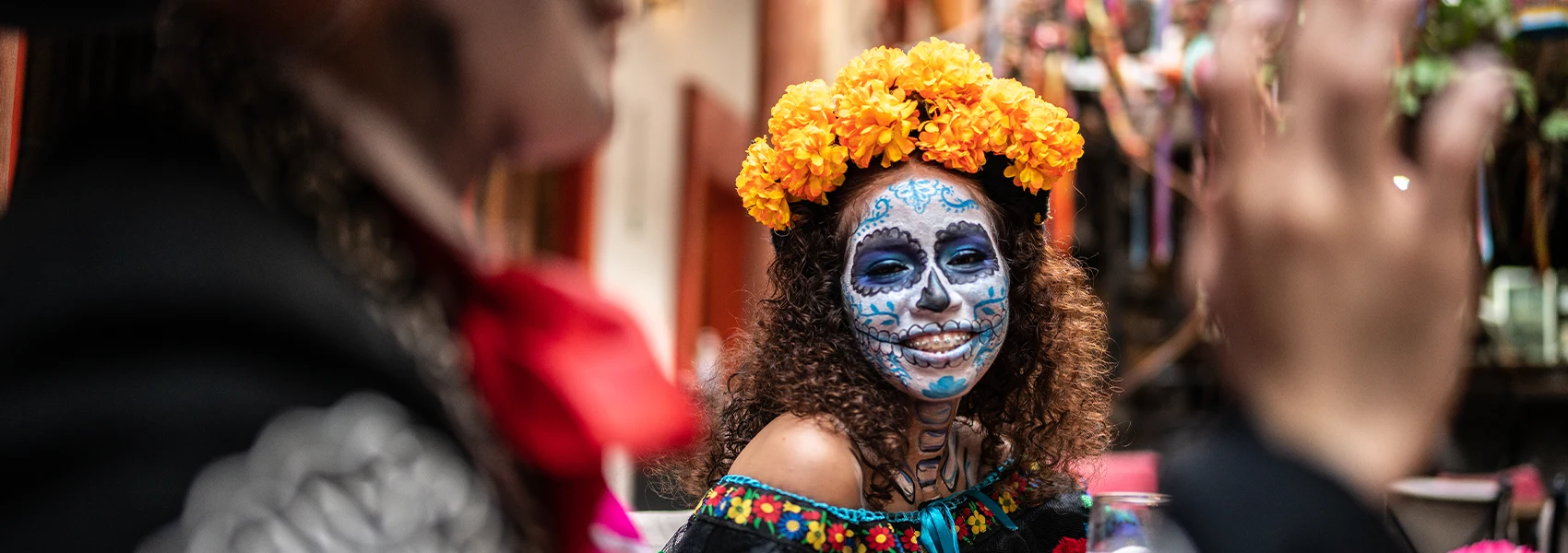
Published 28th Jun. 2021
Reading time
' Doctor, if you let me drink this tequila, I promise I won't drink at my funeral ,' said Frida Kahlo. However, this didn't include the countless people, her friends and admirers, who toasted and honoured her soul during the very festive Día de Muertos.
To say that in comparison we remember our dead rather timidly would be an understatement. Come the Day of the Dead, Mexican cemeteries transform into a giant social gathering, fuelled by tequila and religious syncretism, with ancestors' graves lined with cempasuchil (the flower of death) while descendants reverentially kiss 'La Catrina', the iconic hatted female skeleton who embodies the holiday.
Welcome to Mexico, where joy rubs shoulders with death like the best black comedy. In Mexican tradition, death is not the end, but the beginning of a journey - you do not truly die until the last of your descendants forgets about you.
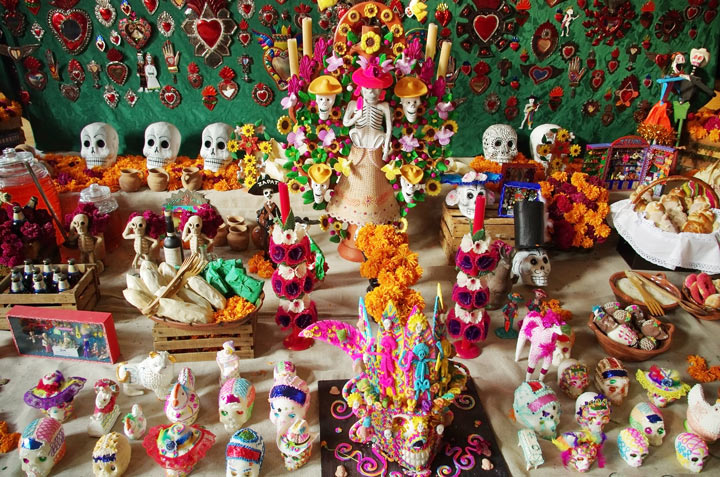
Getty Images
The Day of the Dead or 'Día de Muertos' is a national holiday that has existed for over 3,000 years. During this period, the dead are honoured. Every year, all Mexican families erect altars in honour of deceased relatives. Outside and in, everything is decorated and covered in flowers in honour of travelling souls, with papel picado (paper cuttings), calaveras (skulls made of sugar) and perhaps some mezcal, depending on your taste. Above all, the deceased's favourite food is placed on the altars. On the last day, parties and banquets are held in cemeteries, making it one of the most important festivals of the year. The souls of the deceased are cherished, pampered, sung to, kept company, and then escorted home when the party is over.
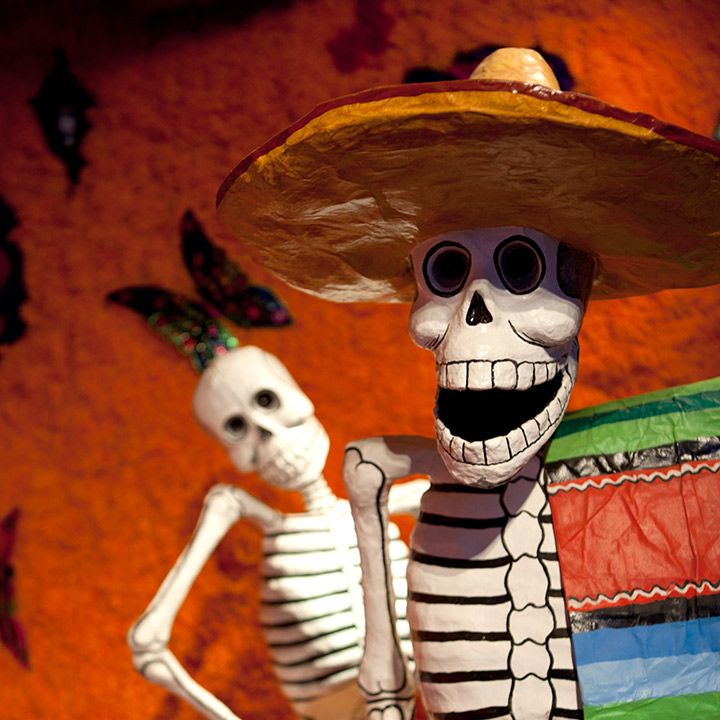
Olivier Romano
Listed on the UNESCO Representative List of Intangible Cultural Heritage , 'Dia de Muertos' or Day of the Dead actually consists of three days of festivities that are both sacred and codified, somewhere between Aztec customs and Catholic beliefs.
The night of 31st October -1 Novemberis dedicated to 'los angelitos ' (dead children). The morning of 1st November (All Saints' Day ) is dedicated to the breakfast of 'los angelitos'. Then, new offerings are placed on the altars for deceased adults. On 2nd November, during the commemoration of the deceased, Mexicans go from one cemetery to another, throwing flower petals and lighting candles to guide souls to the graves.
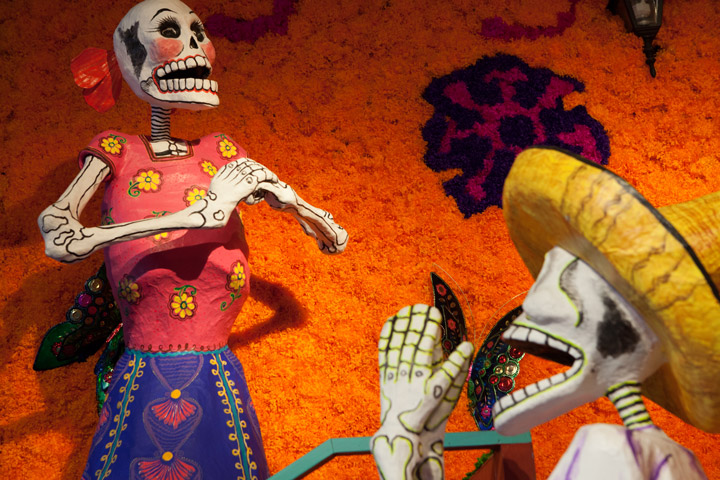
Olivier Romano
Families set up altars in their homes to offer departed souls their favourite foods as well as other marks of love and remembrance. Some altars strictly follow pre-Hispanic rituals and consist of seven levels, thus representing the seven steps that the dead soul must go through before it can find rest:
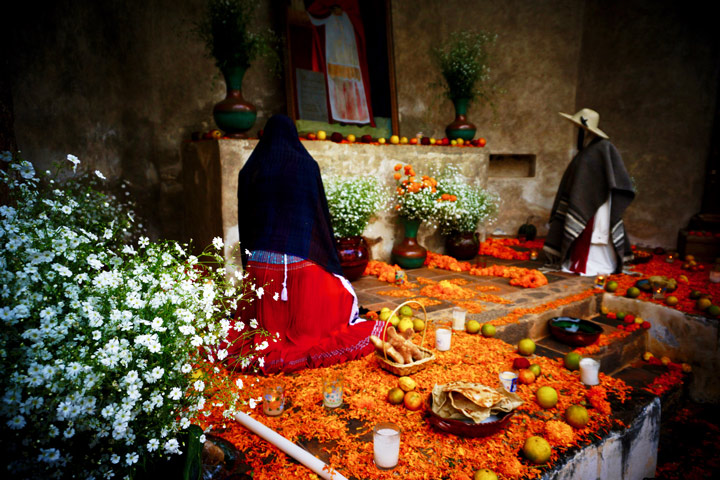
Getty Images
In Mexico, La Calavera Catrina, an emblematic figure in colourful papier-mache, has become the popular icon of the Day of the Dead, and by extension of Mexican culture, in the 20th century. In Mexico, the great ritual celebration of the dead is accompanied by parades, songs, dancing, carnivals and large festive meals.
The festivities of 'Dia de Muertos' take place throughout the country, with each state celebrating in different style. No two are alike, but all offer a magical, colourful celebration with an aura of authentic emotion, beyond anything you could ever imagine or experience in Europe. :

Getty Images
Michoacan State is famous for the city of Patzcuaro and its surroundings. Stroll through Plaza Vasco de Quiroga in Patzcuaro, where the holiday is still celebrated with great ritual and solemnity. Farther afield, the celebrations on Janitzio Island are also well known and attract thousands of visitors each year. The ceremonies and offerings to the dead take place in the old cemetery behind the main church, where a never-ending sea of candles is lit alongside flowers galore.
Other villages in the area are not as well-known to tourists, allowing for more authentic festivals with intact religious traditions. For example, in Cucuchucho, women dress in their finest outfits to prepare altars and offerings and keep candles lit into the early hours.
Mictlan Festival in Xalapa, Veracruz. A festival renowned for its great diversity. This festival invites audiences to venture into a dreamlike world over five days of uninterrupted performances. Crypts, tombs and mausoleums act as backdrops for the Mictlan Festival, which invites theatre, music and dance artists to present their stage and cultural creations.
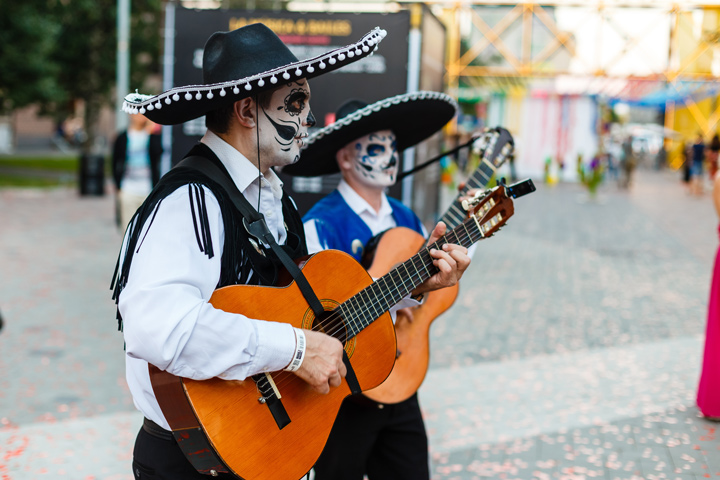
Fotolia
The Festival of Light and Life in Chignahuapan, Puebla. A true whirlwind of lights, mysticism and emotions. Hundreds of people illuminate and move around the floating stage of the lagoon, with candles, torches and thousands of lights flickering in the air and water, accompanied by dazzling fireworks and music. It's a truly enchanting experience.
Finally, Mexico City, which is definitely a must. Infinitely more popular since the animated movie 'Coco' and especially since the release of 'Spectre', the Bond film directed by Sam Mendes, which begins with a deadly parade scene during 'Día de Muertos'. It's worth noting that the Day of the Dead parade seen at the beginning of the film didn't used to actually exist. It wasn't until October 2016 that the Mexican government decided, as a tribute to the film, to actually introduce it. Life imitating art and all that... And in the days leading up to 2nd November, Mexico City invites its artists to give their creativity free rein, creating a temporary cemetery inside which they create various works of art : giant sculptures, frescoes on the ground, carpets of sand and flowers, dances and tributes to recently lost writers, artists and celebrities.
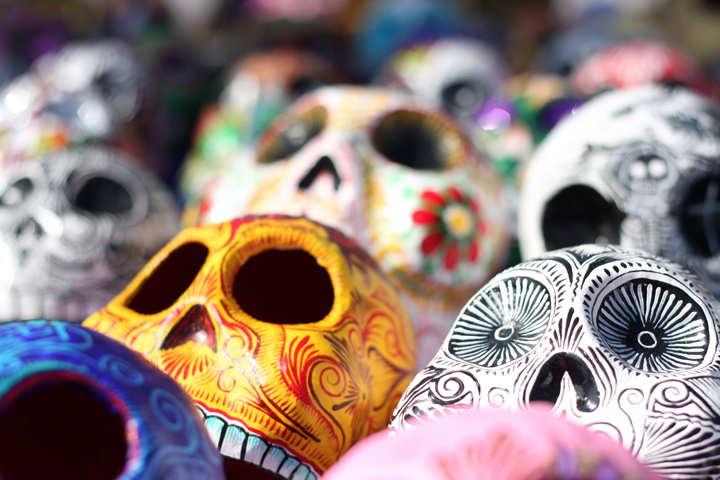
The Day of the Dead lives, plays, dances and prays until dawn. It's only in Mexico that death takes on festive colours and where art brings death to life.
By
PAULINE PINSOLLE
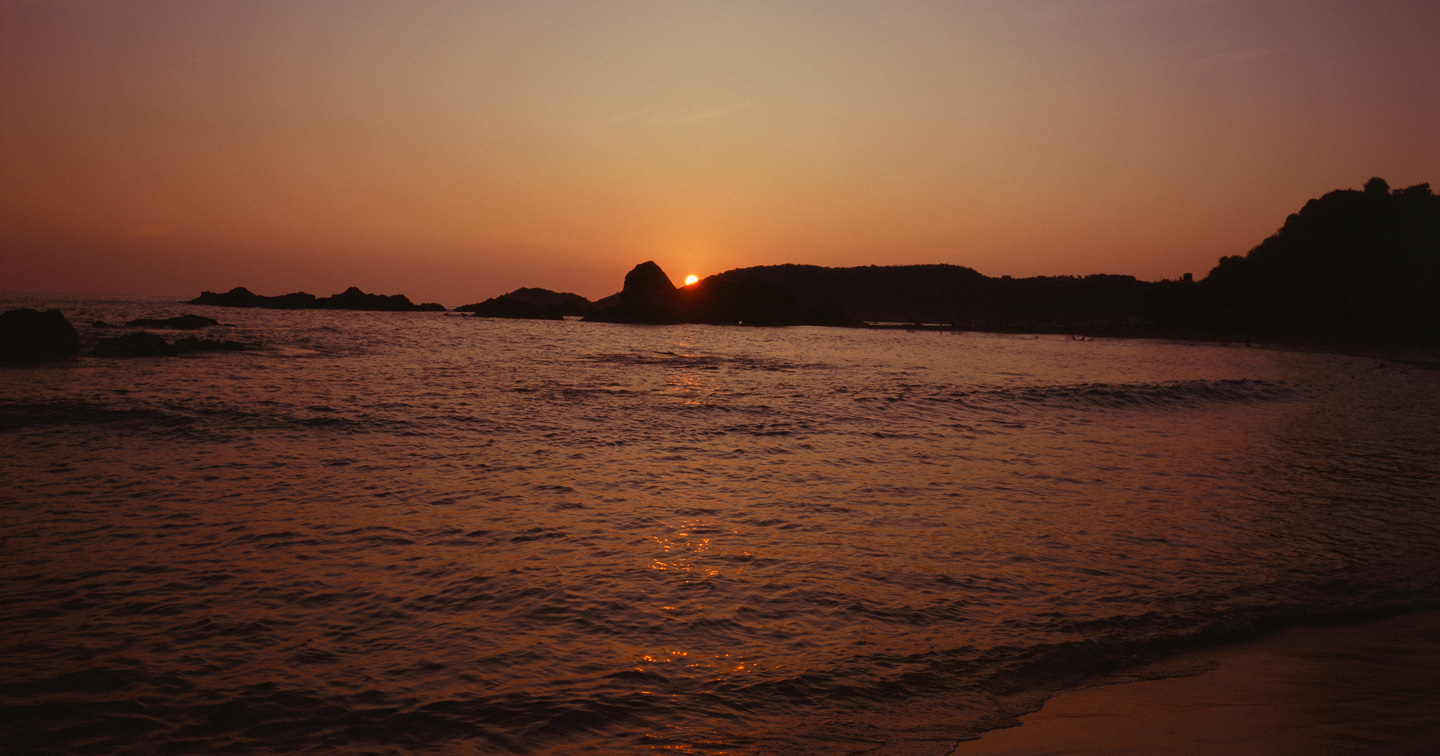
Designing authentic trips with a focus on local people, experiences and communities, our consultants have scoured the length of this colourful country to uncover its secret spots. Among these are hotel hideaways offering a real Mexican welcome, from private haciendas to local homestays. Whether you’re most interested in architecture, culture, wildlife, food or lucha libre (Mexican wrestling), our clued-up regional guides have you covered. And during your trip, our talented in-country Concierges are on hand to impart even more insider tips.
ENQUIRE NOWPractical advice and inspiration for your next trip
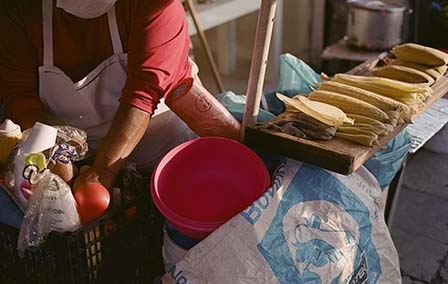
Street food in Mexico is akin to Yorkshire puddings or tea in England. Part of the social fabric, they represent a history and way of life that has stoically survived thousands of generations. Mixing Mayan and Aztec flavours with Spanish seasoning and French pastry, they’re in a cuisine class of their own. So, it’s no surprise that historic street eats have made their way across the Atlantic in the form of the restaurant chain Wahaca and myriad street food vendors.
13th May 2025 - Mexico Food & Drink
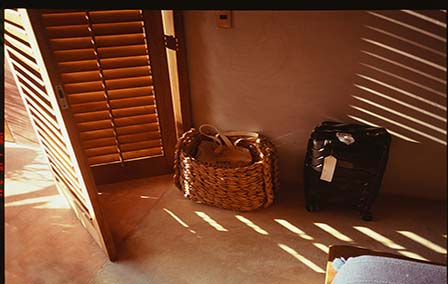
Last updated: September 2024 by our Mexico specialist, Oliver. Generally speaking, Mexico is considered a safe country to visit. It’s a popular travel destination known for its rich culture, beautiful beaches and historical landmarks. If you’re keen to explore this part of the world but find yourself asking the question, ‘Is it safe to travel to Mexico?’ the short answer is yes. But, as with any country, it has its fair share of safety concerns that travellers should be aware of before planning a trip.
1st September 2024 - Mexico Travel Tips
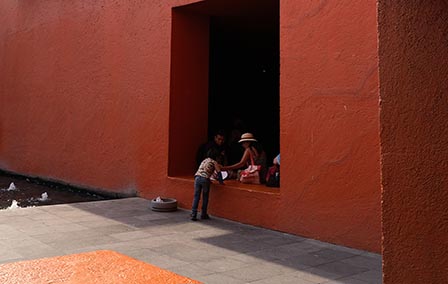
Colourful, cosmopolitan and full of character, it’s impossible not to be charmed by Mexico City. It can also feel near-impossible to avoid the crowds, so to help you head off the beaten path, here’s our round-up of five hidden gems in Mexico City. From bustling markets to picturesque parks and memorable museums, these are the pitstops you won’t always find on the most popular itineraries. Whether on a layover or longer trip, these slightly-more-secret spots offer a fresh perspective on the much-loved Mexican capital.
7th March 2024 - Mexico Travel Inspiration

Our team of destination experts will get to know you and your unique requirements for your holiday

We work with you to build an ultra-personalised holiday itinerary with your choice of accommodation, experiences and activities

All of our holidays include little extras designed to make a big difference to your trip, from fast-tracking you through airport check-in and security to our network of local Concierges